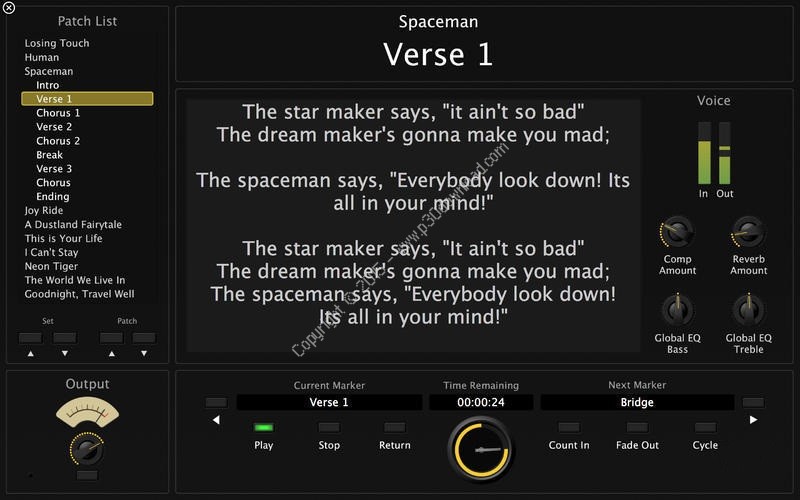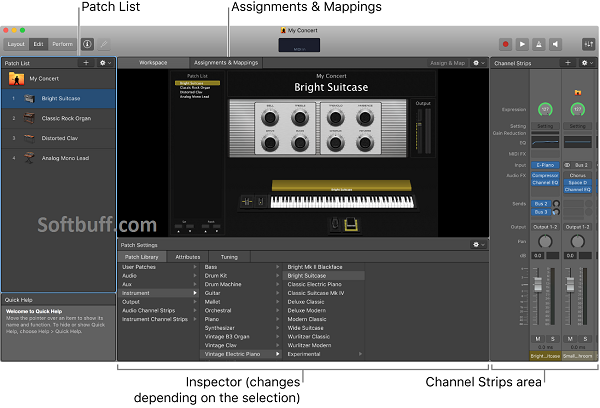

- #Apple mainstage introduction how to
- #Apple mainstage introduction generator
- #Apple mainstage introduction Patch
Instead of the C1 fader, it had four assignable faders C1 to C4 that could also be bank switched into two other functions, one being Attack, Decay, Cutoff and Resonance controls, the other being a 4 channel tone / part mixer. The XP-30, being a next generation of the same family of synths, had a facility that allowed me to import all my JV-80 patches, giving me a start point that was right where I left off from the JV-80. With this, there would typically be a button or two to turn on effects such as chorus, reverb and/or tremolo and sometimes a dial to tweak a parameter. It was great to bring the richer sound into the mix using a foot controller rather than reaching over to a fader or dial.
#Apple mainstage introduction Patch
So I would typically have a three layer patch on my JV-80, with a primary sound set (typically piano, or EP), the background sound would be controlled by the C! fader, but the strings sound would be controlled by the expression pedal. With the JV-80 came an assignable “C1” fader, but the “cat’s meow” was when I added an expression pedal to my gear. In the early days, you just adjusted the dials on the hardware.
#Apple mainstage introduction how to
The other area I quickly converged on was a simple approach to how to adjust sounds. With the XP’s 64 voice polyphony, this issue was more or less gone, as with the RD-800.

With the JV-80, I could layer up to three tones before the polyphony limit (28 voices) became noticeable in terms of older notes cutting out as new ones are played. With the JV-80 (and since), I have been able to do it all within the keyboard.
#Apple mainstage introduction generator
In the earlier days, this involved combining MIDI sound generator boxes with my digital piano.

I would start with a primary sound consisting of a piano or electric piano sound, and then layer with this one or more pad, strings, organ and/or brass type sound. The RD-800, though technically not a synthesizer, still resembled the same usage model (and still packed a good assortment of synth sounds in it).ĭuring all this time I had converged on a straightforward usage model that I have stuck with since the 1980’s. I stuck with Roland because I was always happy with the sounds, and the model they used to organize how the synths work. It was the logical successor to the JV-80 and was my workhorse up to a few years ago when I bought a Roland RD-800 stage piano. The keyboard after this is my XP-30, still in mint condition. I wanted something much more portable, but something with high quality sounds and fully programmable and the JV filled that. My next keyboard was a Roland JV-80 61 key synthesizer. I used this at church, at youth and family camp, for prison ministries and more. My first keyboard was a Roland HP-5600, the home model analogous to the original RD-1000 stage piano. This was in 1986, the same year I got married. Since I would have to spend money on a musical instrument, I made the switch and bought my first keyboard, a digital piano. At one point the church’s bass was stolen, so I had nothing to play any more. During this, I learned how to play piano. This later progressed to guitar, bass, drums and leading worship. We had a two horn trumpet section in our band. My involvement in worship ministry began as running sound and playing trumpet with the pastor during worship. I had pretty much lost any childhood interest I had in music long ago, was a young man in my 20’s and felt great warmth and release as a byproduct of singing songs of praise to our Lord.

I found this new fangled thing at church called praise and worship that was very musically oriented. My journey as a Christian and a worshiper goes back to 1981 when I gave my life over to Jesus. In other respects, it’s like finding new ways of doing the same old things. In some respects, its like an old dog learning new tricks. This begins my account of learning to use Apple MainStage 3 for live performance within a worship context.


 0 kommentar(er)
0 kommentar(er)
